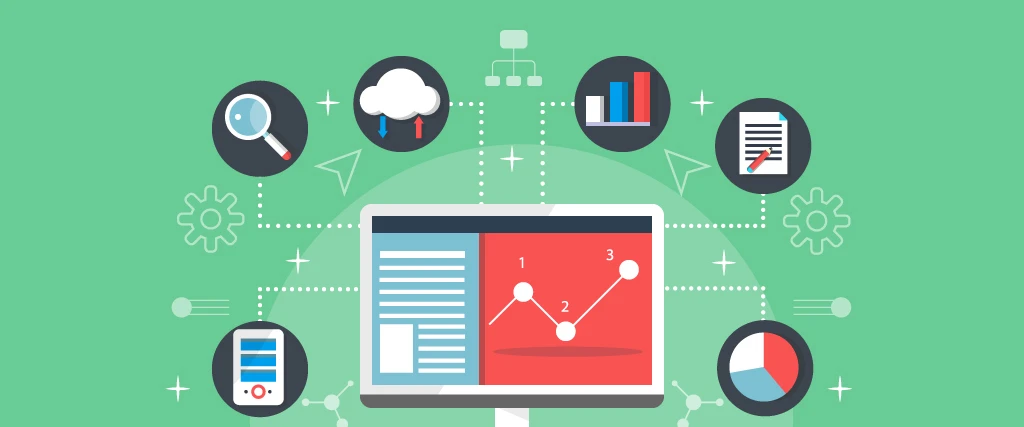- Insights
- Digital Experience
- Article
Appreciating the value of predictive analytics in banking

If words like "amortization" get your customers feeling anything but amore, you're not alone.
Many would-be customers grapple with the complexities of financial decision-making. It's easy for them to become paralyzed by choice: should they save? Invest? Pay down debt?
These anxieties are compounded by an increasing sense of financial vulnerability amid rising inflation and costs of living. According to the American Psychological Association's 2022 Stress in America™ survey, 65% of respondents say money is the most significant stressor in their life — a steady rise from the previous survey results from 2021.
For banks and fintechs, consumers' rising financial stress and decision fatigue present an opportunity to ease tensions through digital customer experience (CX). By looking after your customers' best interests and helping them make better decisions, industry brands can demonstrate that they understand the challenges of the day. As Forrester's report The Top Emerging Technologies In Banking In 2022, points out, this is where predictive analytics can play a critical role.
Predictive analytics in finance
Predictive analytics is an artificial intelligence-backed technology that captures data from diverse sources and uses computer models to create insights for a range of practical applications.
In the financial services industry, the technology is used to score client's creditworthiness, identify fraud and much more. In fact, while industry brands have leveraged the power of predictive analytics for some time, the use cases are evolving — so much so that the aforementioned Forrester report lists predictive analytics as a "hot" technology. The research firm explains that the label reflects "both interest and planned spend in the coming 12 months," and adds that it will "shape the future of the banking industry and customer experience."
Companies in the financial services industry are rapidly adopting predictive analytics as a way to gain a competitive edge, and to deliver higher-end customer experiences. As per the Forrester report, 89% of global data and analytics technology decision-makers in the financial services industry placed real-time/predictive analytics in the high-priority category. They said they either already implemented the technology, have begun the implementation process or are planning to introduce it imminently.
The sheer amount of sophisticated data collected by banks and fintechs has led to further development of a wide suite of internal and client-facing tools that target specific customer needs.
Building the future of banking
Despite the many personal finance tools and resources available, an understanding of finance fundamentals is still a gap for many customers. The 2022 Investopedia Financial Literacy Survey found that only around half of Americans have a strong grasp of financial literacy basics like budgeting, saving and spending. Even fewer felt confident in their knowledge of investing and digital currency.
A lack of confidence and trust can lead to poor decision-making, and sometimes deter customers from making decisions at all. This underlines the importance of looking to your data for signs of customer indecision or low confidence. When natural language processing and other AI applications are considered, speech and text analytics can be of great value for industry brands. Mining unstructured data from voice- and text-based interactions (email, chat, social media, SMS, etc.) with customer support teams can yield untold customer experience insights.
In the ideal situation, insights unearthed by customer analytics and AI can help banks to develop comfort levels among their customers. This is not only true on the level of the individual customer, but also at a higher level that enables banks to pick up on trends and create solutions that help customers make sound financial decisions.
The benefits of predictive analytics in banking
From a customer experience perspective, predictive analytics are the gateway to data-driven personalization. Many financial institutions have the data at their disposal, but can miss the mark when creating personalized experiences that resonate with their customers, notes a J.D. Power 2022 U.S. Retail Banking Satisfaction Study.
"It's no longer predominately about being fast, efficient or convenient," says Jennifer White, senior consultant of banking intelligence at J.D. Power, in a press release alongside the survey data. "The preeminent performance metric with the biggest influence on customer satisfaction is 'supporting customers during challenging times,' and that means customers are expecting a personalized mix of financial advice, hands-on help with problem resolution and guidance on how to grow their money."
According to the J.D. Power survey, 46% of respondents feel the most critical part of personalization is getting help avoiding fees for things like overdrafts, while 37% say they want to receive account alerts. Predictive and real-time analytics can help make both those wishes come true because of how adept the technologies are at identifying anomalies and predicting outcomes. Being able to alert customers of potential overdrafts, detect odd and potentially fraudulent spending and propose debt management solutions are examples of analytics in action.
These solutions are low-hanging fruit for banks and other financial services providers. More sophisticated and bigger-picture ideas include AI-powered modeling in customer product design and uptake, and determining creditworthiness more equitably by looking beyond past borrowing history and instead including a broader set of data points to determine eligibility. They can also more accurately predict (and lower the cost of) credit risk.
Internally, your contact centers can benefit from analytics technologies that predict client issues and supply support agents with the exact information they need to solve issues quickly — a powerful tool that helps improve critical KPIs like average handle time and first call resolution.
Predictive and data analytics are even useful in managing your staff. They can identify gaps in customer experience training and knowledge bases, helping you to better target skills training opportunities.
The future is now
In today's market, financial services providers are feeling an elevated sense of urgency to up their data game as customers look for banks and fintechs that deliver a more refined, personalized customer experience. Developing and effectively implementing predictive analytics takes time and resources — both of which can be saved by working with a trusted partner with experience in both the banking industry and disruptive technology.



